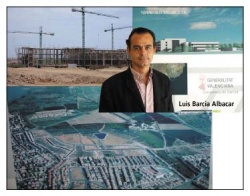Spanish model spreads wings
By Dr Eduardo de la Sota, our correspondent in Spain
The Valencia Community Government, applying actual Spanish Legislation, has promoted an innovative healthcare model -based on private management of a public hospital.

The model, which began in the Ribera Hospital, in Alzira, has been extended to the Torrevieja and Denia hospitals, and is being implemented in other areas of Spain and Europe. However, not all experts agree with the concept. Allyson M Pollock, Jean Shaoul, and Neil Vickers (2002) published an article against the private finance initiative (PFI) system in the UK, concluding:
• The private finance initiative (PFI) brings no new capital investment into public services and is a debt that has to be serviced by future generations.
• The government’s case for using PFI rests on a value for money assessment skewed in favour of private finance.
• The higher costs of PFI are due to financing costs, which would not be incurred under public financing.
• Many hospital PFI schemes show value for money only after risk transfer, but the large risks said to be transferred are not justified.
• PFI more than doubles the cost of capital as a percentage of a trust’s annual operating income.
To discuss this, I met with Luis Barcia Albacar, Executive Director of the Torrevieja Hospital in the coastal town of the same name, in the South of Alicante province, and the Vega Baja district. He explained that the hospital, being built on public grounds by a Private Finance Initiative (PFI), which will also provide healthcare services to the area for 15 years. However, after five years, according to an administrative concession, the hospital will be owned by the Health Department of the Valencia Community Government, so then the PFI will be managing public funding.
‘The Valencia Government will pay the PFI an annual capitation-fee for inhabitants in the catchment area,’ Luis Albacar continued. ‘But this has two conditions: The money must follow the patient and the physician must have a free choice. Therefore any patients in the area who seek hospital services elsewhere will incur costs that the PFI must pay to the Valencia Government. On the other hand, the Valencia Government will pay the PFI for all the treatments received by patients who do not live in the catchment area. There will be cross-billing between the Valencia Government and the PFI based on DRGs. Primary and specialised healthcare will be offered. Of course, universal coverage is provided and all services are free of payment for users.
In effect, he said, ‘The PFI makes an investment in needed facilities and, in return, receives a fixed capitation fee for a 15-year period. PFI needs to make the right decisions, to avoid being penalised by its own patients going elsewhere. The Valencia health department allows the PFI to manage a public hospital during a period of time but, at the same time, ensures that patients in the area receive universal, equal and high quality healthcare like other citizens.’
The new public hospital, serving a population of 110,000 residents in 11 municipalities from the Vega Baja, will be the second to be built in the town following San Jaime private clinic. It will cost around euros E80 million and will have 250 rooms, 12 operating theatres and a specific theatre for the intensive care unit.
‘We are pursuing excellence,’ Luis Barcia explained. ‘We will implement high technology services and a modern management system, to provide quality of care and generate patient satisfaction. Equity is a key value for us. We will stress the importance of a global information system. We also need to work hard on efficacy and efficiency. In our model the general practitioner is the central element of the system and, using evidence-based medicine and high technology, lengths of stay will be as short as possible.’
An individual incentives system, based on activity, efficacy, efficiency and quality of care, will operate for professionals, and continuing education and R+D will be strongly promoted, he said, adding that the management organisation will be based on ‘Service Co-ordinators’ leading their own fields to promote teamwork, internal communication and information flow.
When resources are limited and needs unlimited, innovation and creativity might help healthcare delivery, and this is an interesting example.
07.08.2006





